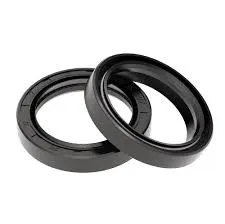7 月 . 28, 2024 10:08 Back to list
35mm x 52mm x 8mm Oil Seal Specifications for Enhanced Sealing Applications in Machinery
Understanding the 35x52x8 Oil Seal Specifications and Applications
Oil seals play a crucial role in various mechanical systems by preventing the leakage of lubricants and contaminants. Among the myriad types of oil seals available in the market, the 35x52x8 oil seal stands out due to its specific dimensions and versatile applications. In this article, we will explore the characteristics, construction, and uses of the 35x52x8 oil seal.
Specifications
The numbers associated with the oil seal, namely 35x52x8, indicate its dimensions in millimeters. Specifically, the first number (35mm) is the inner diameter (ID), the second number (52mm) signifies the outer diameter (OD), and the last number (8mm) denotes the width of the seal. This particular size makes it suitable for various applications in different machinery and equipment types.
Oil seals are generally composed of elastomeric compounds, and the choice of material greatly affects their performance. Common materials used for oil seals include nitrile rubber (NBR), fluoroelastomer (FKM), and silicone. These materials are selected based on their ability to withstand various temperatures, pressures, and chemical exposures. The 35x52x8 oil seal is often manufactured from NBR due to its excellent resistance to petroleum-based oils and its capacity to maintain flexibility across a wide temperature range.
Construction
35x52x8 oil seal

An oil seal consists of several components, including the sealing lip, the body, and the spring. The sealing lip is critical in creating the barrier that prevents the leakage of oil. It is designed to conform to the rotating shaft while providing a tight seal. The body of the oil seal houses the sealing lip and provides structural support, while the spring (typically made from stainless steel) ensures constant pressure on the sealing lip against the shaft. This design allows for a robust and effective sealing mechanism that can adapt to various operating conditions.
Applications
The versatile nature of the 35x52x8 oil seal allows it to be used in multiple industries. It is commonly found in automotive applications, particularly in engines, transmissions, and differentials. In these settings, the oil seal prevents engine oil from leaking, thereby ensuring optimal performance and longevity of the vehicle.
Additionally, the oil seal is also utilized in industrial machinery and equipment. For instance, it can be found in pumps, compressors, and motors where maintaining lubricant levels is crucial for efficient operation. Furthermore, it plays a vital role in agricultural machinery, construction equipment, and even marine applications, where the integrity of oil systems is paramount.
Conclusion
In summary, the 35x52x8 oil seal is an essential component in both automotive and industrial applications. Its specific dimensions ensure a perfect fit for various machines, while its durable construction provides reliable performance over time. As industries continue to evolve and advance, the demand for high-quality sealing solutions like the 35x52x8 oil seal will remain vital. Understanding its specifications and applications allows engineers and technicians to make informed decisions, ensuring that machinery operates efficiently and effectively, thereby reducing maintenance costs and downtime. As technology progresses, the importance of such components in machinery cannot be overstated, emphasizing the vital role that oil seals play in modern engineering.